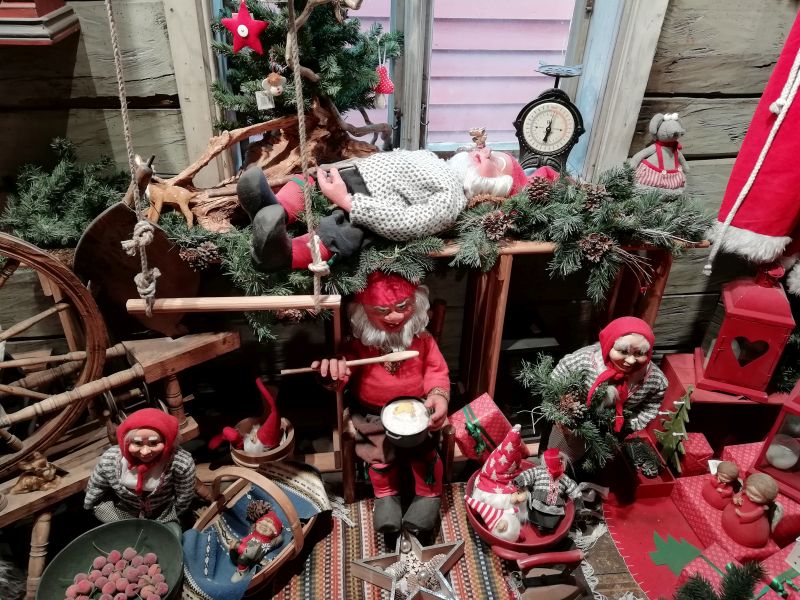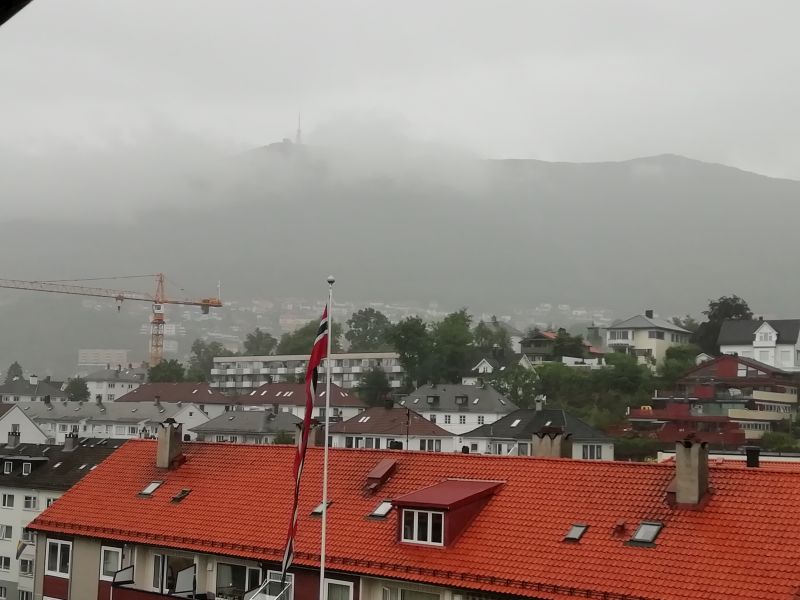Bergen - History and Shopping
Bergen was founded in 1070. Until 1830 it was the biggest town of Norway, an important European sea and trading port and an important trading centre of the Hanseatic merchants.
The German Kontor was established in Bergen in 1360 and existed for 400 years (ca. 1360-1754). The Hansa held a monopol for trading stockfish and fish oil. The Kontor was located in Bryggen, right in the centre.
The Bryggen houses burnt down several times but always were rebuilt in the old style. Today's houses date from 1702 and belong to the UNESCO World Cultural Heritage.

In Norway Bergen is also known as Syvfjellsbyen (Town of Seven Mounds). This epithet is said to go back to the poet Ludvig Holberg, probably referring to the seven mounds of Rome. The actual number of mounds surrounding the town is debatable, among others because five of them (Ulriken, Fløyfjellet, Rundemanen, Blåmanen, and Sandviksfjellet) are all part of the same massif.
Lyderhorn (396 m), Damsgårdsfjellet (317 m), Løvstakken (477 m), Ulriken (643 m), Fløyfjellet (400 m), Rundemanen (568 m), Sandviksfjellet (417 m).

After several devastating town fires (1702, 1855, 1916), favoured by the typical Norwegian timber style, the town issued a decree no longer allowing the erection of timber houses within the town area.

The port quarter Bryygen, several times not spared by the fires, after every desaster was rebuilt following the old plans. Consequently the profile today is the same as in the 12th century.
In the great fire of 1702 almost all buildings, mostly of timber, were destroyed. Followed a reconstruction in the old style. In 1901 a part of the southern row of houses was torn down and rebuilt in bricks but with the gables in the old fashion. Since WW II, in the wake of which everything German was much disliked, the German Bridge is only called Bryggen. The quarter was neglected in the past-war-years and in a fire in 1955 once more great parts of Bryggen were destroyed. About half of the 1712 buildings were lost. After years of discussion - tearing down the 62 remaining houses was debated - a reconstruction began since 1965.

It's only Midsummer, but looking at a few Christmas ideas will do no harm.

And you'll find everything quaint and silly.

After a torturous long time this informative visit is finished and we proceed to the market at the port.
We do not find the charming, 20 m long stockfish in Bryggen today. Perhaps it's on repair.
Instead there is fresh fish on the market. The ideal place for those liking fish of every fashion. These guys however we leave where they are.

No matter if you like fish or don't, if you weren't here, you weren't in Bergen. Stalls to no end as every time. The first documental mention of the market can be found in the Bergen City Law of 1276. From the 13th to the 16th century the market was held at the northern shore of the bay between the Bergenhus fortification and the eastern end of the bay and thus in front of the Hanseatic mechant houses of the Tyskebryggen.
In 1541 the citizens of Bergen required a relocation of the market to a more neutral place to oppose the control by the Hansa. So in the end the market found its place where it is today.

In the beginning only fish from the regional sea was offered. Partly the fish was sold alive directly from rowing boats and ships. The fish was kept in boxes with holes and trailed behind the boats up to the market.
Today fish and exocic seafood from all over the world are offered in modern stalls. Beside cod, herring, and pollack also king crabs and salmon from the Norwegian Sea and sea urchins from the Mediterranean are traded. Today the market first of all appeals to tourists and so also fruit, Norwegian berries, and vegetables as well as moose and reindeer products are offered. You even will find wale meat.

Looking for the mooring place of the Hurtigruten we stroll along the port and find impressive wall paintings.
Really beautiful graffiti, absolutely awesome...

...with a great force of expression.
We learn that there are said to be 248 streetart-paintings.

We are wondering if Bansky was in this part of the town, much reminds us of his paintings.
On the search for a pizzeria or restaurant we meet the 'shortest street of Norway'.

Really not long, but as an advantage the 'Hellandsgarden' certainly is very quiet. However, in Scotland, on Wick, there is an even shorter street: Ebenezer Place with a length of no more than 2 metres and holding nothing but a very narrow house, the front of it having just room for one door. Anyway, Ebenezer Place on Wick is an official street and so the shortest of the world.

Finally in the much longer street Strandgaten we succed with the ship. Nobody is to be seen but my 'Commander' does not permit me a short visit to the it.
The MS Otto Sverdrup (formerly MS Finnmarken) is named after a great Norwegian polar adventurer. It is one of ten Hurtigruten cruisers.
Instead we now do find a nice pizzeria - Tavassi Taste - and pay 50 € for 2 excellent Calzones with Coke.

In pouring rain we see that we return to our safe cottage but have the time to wonder if there is a workshop or hobby room behind this gate (Nailgarden...)

Looking out of the window to the Ulriken, we only can hope for better weather. Our flat in the Minde Apartment is really nice and comfortable but the technique needs amendments. The Wlan has hiccups and the TV is not connected.
So lets hope that the weather at least is amended...

